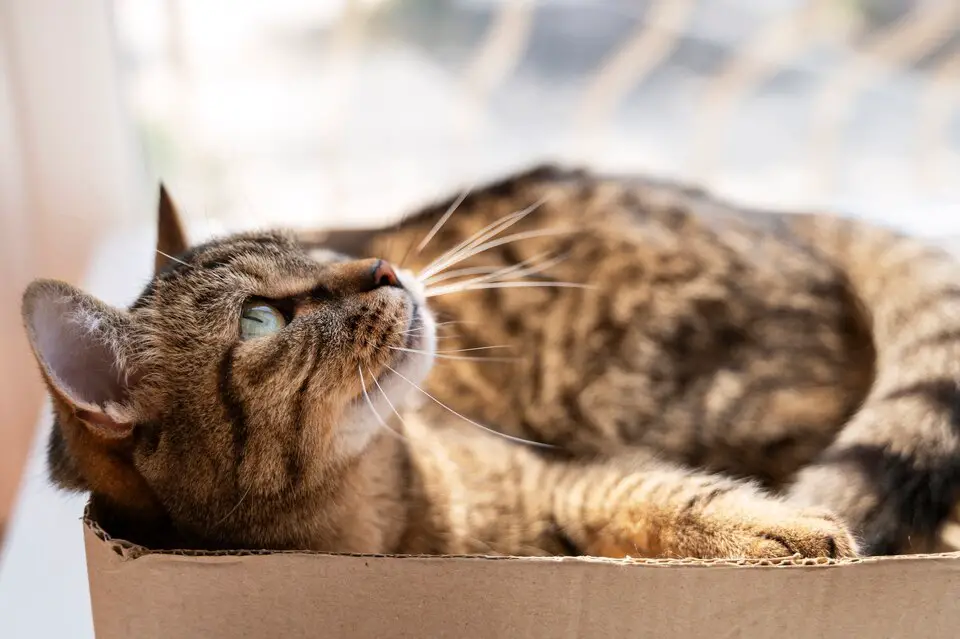Cats, those enigmatic and independent companions, often possess an uncanny ability to hide their discomfort. One aspect of their well-being that’s easy to overlook is their hydration. Dehydration can creep in quietly, posing significant health risks to our feline friends. This guide delves into the art of preventing dehydration in cats.
Understanding the signs of dehydration, identifying contributing factors, and implementing effective strategies for maintaining proper hydration are all essential aspects of responsible cat ownership. By the end of this article, you’ll be armed with the knowledge to ensure your beloved cat stays hydrated and healthy.
Recognizing Signs of Dehydration in Cats
Dehydration in cats is a common but often overlooked problem. Realizing the signs of dehydration is crucial for keeping your feline friend’s health.
- Physical Symptoms: One of the telltale signs of dehydration is sticky or dry gums. Additionally, gently pinching the skin on the back of your cat’s neck so it doesn’t quickly return to its normal position could indicate dehydration.
- Behavioral Changes: Cats may become lethargic, lose interest in their usual activities, or exhibit sunken eyes when dehydrated.
- Monitoring Water Intake: Consider how much water your cat drinks. If you notice a significant decrease in water consumption, it might be a sign of trouble.
Factors Contributing to Dehydration
Several factors can contribute to cat dehydration; understanding them is essential in prevention.
- Diet and Nutrition: A diet solely based on dry kibble can lead to dehydration. Dry food contains only about 10% moisture, while wet food contains around 70%.
- Environmental Factors: Hot weather, insufficient access to water, or stressful environments can all contribute to dehydration. Ensure your cat has a cool, quiet place to relax and easy access to water.
- Health Conditions: Certain health conditions, like kidney disease or diabetes, can increase the risk of dehydration in cats. Regular veterinary check-ups can help monitor these conditions.
Tips for Ensuring Proper Hydration
- Providing Fresh and Clean Water: Cats are picky about water quality. Ensure their water bowls are kept clean, and change the water daily. Consider investing in a water filter to eliminate impurities that might deter your feline friend from drinking.
- Water Bowl Placement: Cats appreciate privacy when hydrating. Place water bowls away from their litter boxes and food dishes. Cats are instinctively averse to water sources near their food.
- Cat-Friendly Water Sources: Some cats prefer running water. Investing in a cat fountain can entice them to drink more frequently. It mimics the flowing water they might encounter in the wild, making it more appealing.
- Wet Food vs. Dry Food: Incorporating wet food into your cat’s diet can significantly increase their moisture intake. The higher water content in wet food helps maintain hydration levels.
- Hydration Treats and Supplements: Explore hydration treats or supplements your veterinarian recommends. These can be useful in ensuring your cat gets enough fluids, especially if they are picky drinkers.
Creative Ways to Encourage Hydration
With their curious and playful nature, cats can be enticed to drink more water with a touch of creativity. Here are some innovative approaches to ensure your feline friend stays adequately hydrated:
- Interactive Water Play: Many cats are naturally drawn to moving water. Try gently dripping water from a faucet and let your cat paw at it. You can also introduce shallow containers filled with water and floating toys for them to bat around. These interactive sessions stimulate your cat and make water consumption fun.
- Cat Fountains: Investing in a cat fountain is like bringing the allure of a babbling brook into your home. The flowing water mimics what cats might encounter in the wild, making it a compelling source of hydration. Experiment with different fountain styles to find the one that captivates your cat.
- Ice Cubes: Drop several ice cubes into your cat’s water bowl. The novelty of the floating ice can pique their curiosity, leading to increased water intake. Additionally, the cool temperature of the water might be more appealing, especially on hot days.
- Watering Holes: Create water stations in different areas of your home. Cats appreciate convenience, and having multiple water sources ensures they don’t have to venture far for a drink. Place water bowls strategically where your cat spends most of their time.
- Broth and Ice Treats: Offer your cat low-sodium chicken or fish broth as an occasional treat. You can freeze these broths into ice cube trays, providing a refreshing and hydrating treat. Just be sure not to overdo it, as excessive sodium can be harmful.
Q&A Section
What are the common signs of dehydration in cats?
Common indications of dehydration in cats include dry gums, lethargy, sunken eyes, and reduced skin elasticity when pinched.
How frequently should I change my cat’s water bowl?
It’s best to change your cat’s water bowl daily to ensure it’s fresh and clean, which can encourage them to drink more.
Is wet food more effective than dry food in keeping you hydrated?
Wet food is better for preventing dehydration as it contains significantly more moisture than dry kibble.
What should I do if my cat refuses to drink water?
Consider offering wet food, a cat fountain, or hydration treats if your cat refuses to drink water. If the problem persists, discuss your veterinarian.
Are there any health conditions that make cats more prone to dehydration?
Certain health conditions like kidney disease and diabetes can increase a cat’s risk of dehydration. Regular vet check-ups are essential to monitor these conditions.
Conclusion
Ensuring your cat stays well-hydrated is crucial for their health and well-being. You can keep your feline companion happy and healthy by recognizing the signs of dehydration, addressing contributing factors, and following tips to encourage proper hydration. Remember that each cat is amazing, so experiment with various strategies to find what works best for your hairy friend.

